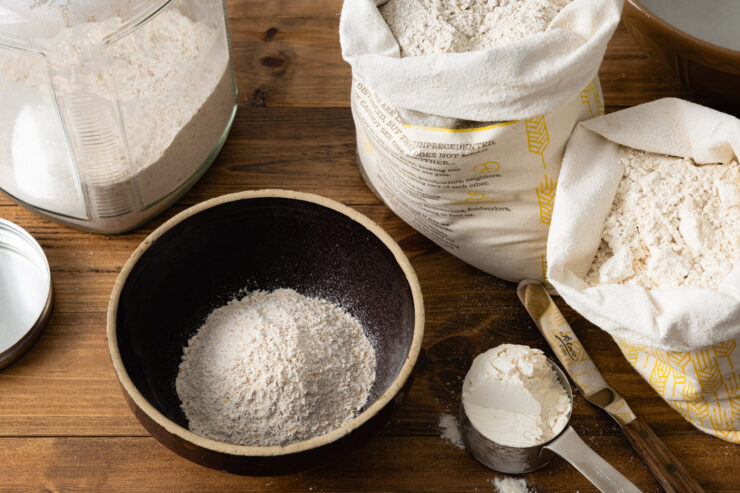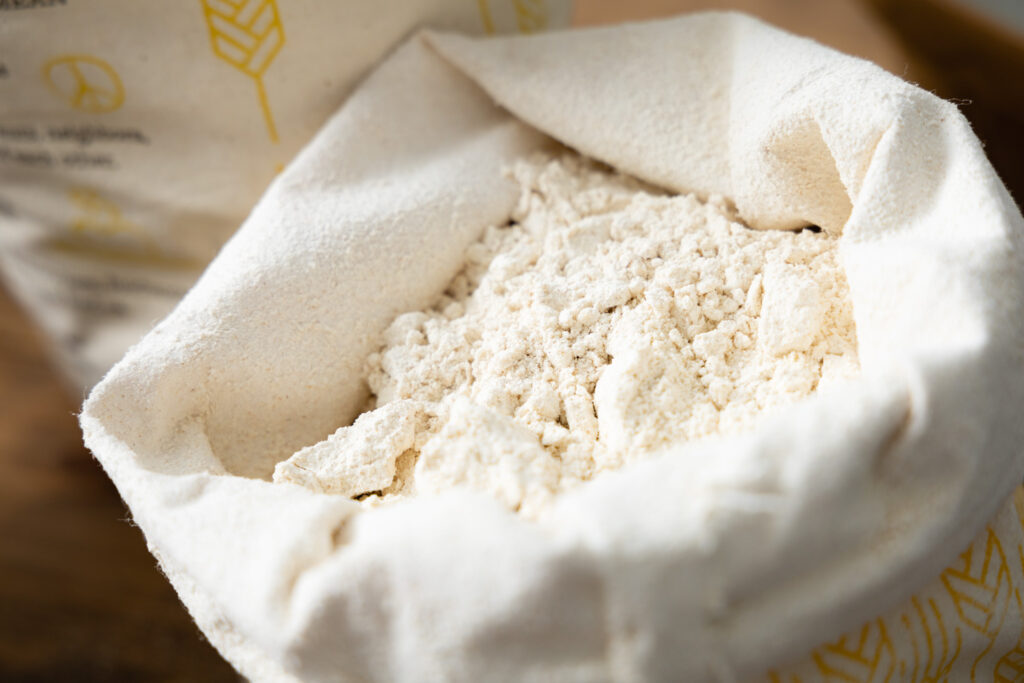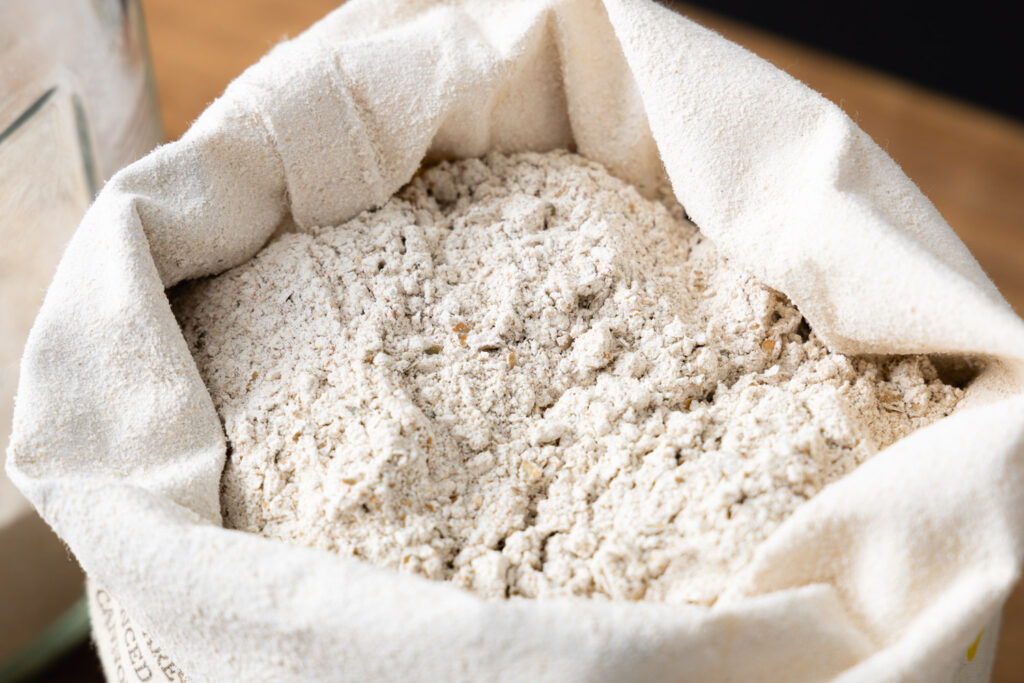
An Introduction to Flour
As bakers we use flour in nearly every recipe, but how often do we stop to think about it? In our love for routine, we bakers tend to stick to a favorite brand because it’s the one we know. We obediently use whichever flour is called for in the recipe, but have you considered why that type of flour was chosen?
Flour makes up the bulk of most baking recipes. If we learn more about flour, we can make better decisions in our baking. We can adapt recipes based on the flavors and textures we want to achieve. We can make educated substitutions if we run out of a type of flour.
All of this knowledge makes us better bakers. But it can also teach us to appreciate the history and millennia of human dedication that cultivated the hundreds of varieties of flour commercially available in our food markets today.

What Is Flour?
Bringing it back to the very basics, the Pastry Chef’s Companion defines flour as the “finely ground and sifted meal of grains, vegetables, grasses, or nuts.” At its coarsest definition, flour is simply a milled ingredient that gives structure to a baked good.
This uncomplicated term, therefore, leads to endless possibilities and variations for a baker to choose from: almond flour to wheat flour, amaranth flour to teff flour, and everything in between.
Why Is It Called Flour?
It turns out it’s not a coincidence that flour and flower sound the same. They are not just homonyms, but it seems that the word flour truly originated as a variant of the word flower. The word was brought to English through the Old French fleur or flour, which had a figurative meaning as “the finest” in addition to its literal meaning. According to Food: a Dictionary of Literal and Nonliteral Terms, the phrase fleur de farine meant “the finest part of the meal,” since flour was the resulting product after milling and removing unwanted parts of the grain.

What Does Flour Do in Baking?
Flour is probably the most commonly called-for ingredient and makes up the bulk of most baking recipes. Flour’s ubiquity comes down to its five main functions in baking suggested by Bo Friberg in The Professional Pastry Chef:
- Flour provides structure.
- Flour creates the particular texture and appearance desired for a baked good based on the type of flour used. Different grains, strengths, milling, and processing will affect how products look and feel.
- Flour contributes to flavor. Different grains and flours contribute different flavors.
- Flour provides nutrition. Flour contains nutrients such as proteins, carbohydrates, fats, minerals, and vitamins. Due to being difficult to prepare and slower to cook, it’s more difficult to access the nutrients in unprocessed grains.
- Flour is a binding and absorbing agent.

The next time you begin a baking project, you’ll now be able to confidently reach for a sack of flour, whether it’s the recipe-called-for flour or not, and understand exactly how it contributes to your bake.

Hello, Mark!
I am new to your blog, having found you through the article on mashed.com about your no-knead rye bread. And I’m curious if, now that you live in the UK, you’ve adopted their methods for baking over the American methods. What I mean is, do you find yourself weighing your ingredients more than measuring them in cups? I am definitely wanting to try your rye bread recipe, but I find that I am a bit of a stickler for measuring my baking ingredients, even though I live in the US. I guess I’ve watched enough non-American cooking shows that it’s been ingrained into me by now!
Hi Sandie, thank you for your comment!
I almost never use measuring cups. I started weighing my ingredients when I learned how much more consistent it is while working in a bakery in my hometown. Plus you can measure directly into the bowl for fewer steps and fewer dishes! Here on my blog, I always provide metric measurements first and then a tab that has volumetric measurements. For recipes I’ve written on other sites, I have to follow the publisher’s conventions.
Happy Baking!